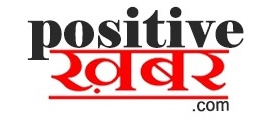
Impact of Covid-19 on Banking and Finance Sector :-
Issues in Banking and Finance before Covid-19: –
a) Bad Loans – Indian banks wrote off a record Rs 2.54 lakh crore of bad loans in FY19.State-owned banks alone wrote off Rs 1.94 lakh crore of bad loans.
b) Capital adequacy – The Committee observed that 12 PSBs had been placed under the PCA framework by the RBI based on factors such as capital inadequacy and high NPAs.
c) Default by few banks and NBFC,s
Banking and Financial services were facing massive problems with the collapse of IL&FS, DHFL and Yes Bank fiasco. The debacle of multi-state cooperative bank, Punjab and Maharashtra Cooperative Bank (PMC) Bank and Yes Bank have once again raised the trust issue in the banking industry.
Post Covid-19 issues: –

a) Increase in stressed Assets – It said asset quality will deteriorate across corporate, small and medium enterprises (SME) and retail segments, leading to pressure on profitability and capital for lenders. The second round of bad loans could come up with the slowing economy caught in the vicious cycle of consumption slump and policy paralysis.
b) Debt Market crisis – It expects sovereign debt maturing by 2020 and by the year 2021 is huge.Developing countries are expected to lose export revenue at a time when their currencies are taking a massive hit due to sharp fall in the financial markets. This has enhanced the cost of servicing their dollar-denominated debt. In normal times, this kind of debt may get rolled over but now all economies are struggling to meet their own ends.
c) Liquidity crisis – Given the situation of the lock down in the country, the defaults may have increased substantially as many companies would have lost revenue for a long time. Funding and liquidity at large private sector banks will also be stable, given their well-established franchises and strong depositor bases. However, the default of Yes Bank will lead to risk aversion among depositors and creditors, creating funding and liquidity challenges for smaller private sector banks with weaker franchises.
d) Valuation Decrease – Due to demand slow down as a effect of income uncertainty and previous inventory will result in decline in collateral value.
e) Low Capital adequacy – The rise in provisions and fall in revenues will hurt banks’ profitability, leading to a deterioration of capitalization.
2.Worst Effected Sectors: –
Here are 5 sectors which are worst effected:-

position amid the crisis:-
a) MSME Sector
b) Tourism and Hospitality Sector
c) Automobile Sector
d) Aviation Sector
e) Real Estate Sector
3.Major Issues of Industry,MSME’s and Government: (Solution to these issues have been separately addressed)
a. Demand Slowdown, Unemployment and consumer confidence
b. Disruption of Supply chains and logistics
c. Establishment of work and home environment procedures of social distancing and hygiene
d. Financial Stress of SME’s causing Liquidity Issue of Banking and Finance Sector
e. Global Recession
f. Paucity of Revenue with Government
g. Cost Increase due to low capacity utilization and decrease in efficiency
h. Cyber Security and Risks
i. How to convert problem into advantage i.e. step towards 5 trillion economy (Growth phase strategy separately explained)
4.Type of Financing Products (based on Collateral and its coverage) of Banks and NBFCs for SMEs:
a. Working Capital Facilities fund based (CC/OD) and non fund based against Approved Collateral.

b. Working Capital Facilities fund based and non fund based against sub standard Collateral (By Small Finance Banks)
c. Term Loan Against Approved Collateral up to 15 year period
d. Term Loan Against unapproved Collateral up to 15 year period
e. Unsecured Term Loans without collateral for 1 to 3 years
f. Unsecured Working Capital i.e. Raw Material Assistance
g. Term Loan against Machinery without collateral for 5 years
h. Term Loan against approved collateral on which Home Loan facility is running
5.Type of SME Borrowers on the basis of total Fund Based Exposure
a) Fund Based Exposure up to Rs.50 Lakh
b) Fund Based Exposure more than Rs.50 Lakh but up to Rs.100 Lakh
c) Fund Based Exposure more than Rs.100 Lakh but up to Rs.300 Lakh
d) Fund Based Exposure more than Rs.300 Lakh but up to Rs.500 Lakh
e) Fund Based Exposure more than Rs.500 Lakh but up to Rs.1000 Lakh
6.Issues in Refinancing of Stressed Assets:
a) Assesment Criteria – Many Banks and NBFC’s were using assessment of funding on many criteria other than disclosed Income. These were unaccounted Income or Average Bank Balance or number of EMI paid etc.
b) Substandard Collateral and Unsecured Exposures – Many Banks and NBFC’s were accepting substandard collateral i.e. without approved map, regularized area, Lal Dora, Gram Panchayat, plot etc.
Some Facilities were sanctioned without collateral.
c) Longer Repayment Period Products:
Most of the Mortgage Loans against property were for period of 15 years.
d) Multiple Organisation Funded various types of facilities – Most of SMEs has taken over various facilities from multiple banks/NBFCs.
e) Valuation of Collateral -Due to abnormal market condition unrealistic valuation of collateral may be seen.
f) Prepayment Penalties – Most of Private banks and NBFCs impose prepayment penalty on borrower for takeover.
g) Lapse of Insurance – Most of Private banks and NBFCs sell insurance policy to borrower endorsed in the name of these Private banks and NBFCs, however if these loan facilities are transferred, a large chunk of premium or full insurance coverage is lost.
7. Approach to resolve issues – Four point approach should be used as below:
1. New Problem needs new solutions (Selection on basis of Key factors method based on quality business and fast recoverability instead of old method based on severity of stress and collateral type and Value.
2. Complete takeover or support to all facilities instead of takeover or support to part facilities.
3. Two Phased Funding first 20% for standing up to December,2020 or March,2021 and additional 10% for Run (Growth) from April,2021 or earlier if SME has depicted growth earlier and has potential to grow.
4. Use of Fund by object
8. Methodology to Finance Stressed Asset-
a) Selection of Recoverable Unit on the basis of Key Factors (Separate Guidelines have been made)
b) Assessment of facilities types and period & funded amount (incl. extra). (Procedure is made with choice of Partial and Fast method of Full and cumbersome
method)
c) Imposing strict conditions and monitoring for end use for object.
(Separate Guidelines have been made)
d) Collateral Assurance even substandard.
(Separate Guidelines have been made)
9.Conditions to be considered:
a) Drop line over draft facility and home loan top up will be treated as term loan.
b) Private banks whose borrower is given additional fund will reduce rate of interest to 9% maximum of funded facility against approved properties.
c) NBFC whose borrower is given additional fund will reduce rate of interest to 9% maximum of funded facility against approved properties.
d) NBFC whose borrower is given additional fund will reduce rate of interest to 10.5% of funded facility against unapproved properties.
e) On take over, no prepayment facility and lapse of insurance policy will be allowed.
f) For Take over, Taking over institution will charge risk premium on secured exposure 4% of outstanding Amount and 6% of unsecured outstanding amount by way of less payment.
g) Once bank or NBFC had accepted scheme. Then it will be applicable for all borrowers opted and selected for scheme. They will have no right to denial to any borrower who has opted.
h) For fast removal of stress of SME’s, selection of eligible cases and assessment to be done special purpose organizations.
i) Fast Mechanism for recovery after 1 year i.e. Amendment in SARFASI Act, insurance.
j) In case SME borrower, Banks/NBFCs gives loan amount maximum up to 75% of collateral value as per approved valuer, hence 25% margin is always available.
10.Funding Mechanism:
A) Partial but Easy
i. For Working Capital 8% and 12% two additional WCDL facility with pari passu will be sanctioned. One for start for repayment of Interest and other for start of production.
ii. For Secured Term Loan for period of >10 year but up to 15 year and lender schedule rate of interest to 10.5% , 10% and 10% two additional WCDL facility with pari passu will be sanctioned. One for start for repayment of Installments for 8-9 month and other for start of production. Second additional facility will be reduced to 5% if having working capital facility.
iii. For other Secured Term Loans take over and reschedule for 10 year (including 9 month moratorium) and 10% additional facility for start of production and ROI 10% for approved properties and 11%-12% for unapproved properties. Additional Facility will be reduced to 5%.
iv. For Machinery Term Loan for 5 year or more lender schedule rate of interest up to 10.5% , 17.5% and 2.5% two additional WCDL facility with pari passu will be sanctioned. One for start for repayment of Installments for 8-9 month and other for repair and overhaul. All exposures will be covered under CGTMSE.
v. For Unsecured Funding for borrower with total exposure of up to 5 Crore, 1 crore unsecured exposure will be taken over and rescheduled for 5 year including moratorium of 9 month and additional 10% facility will be funded same period at ROI of 12% to 14% based on rating and will be covered under CGTMSE.
vi. For Unsecured Funding for borrower with total exposure of up to 10 Crore, 2 crore unsecured exposure will be taken over and rescheduled for 5 year including moratorium of 9 month and additional 10% facility will be funded same period at ROI of 12% to 14% based on rating and will be covered under CGTMSE.
B) Full but Cumbersome
i. For Working Capital, loan shall be taken over fully by SPV or PSB, 8% and 12% two additional WCDL facility with pari passu will be sanctioned. One for start for repayment of Interest and other for start of production.
ii. For Secured Term Loan for period of >10 year but up to 15 year, shall be taken over by SPV or PSB, 10% and 10% two additional WCDL facility with pari passu will be sanctioned. One for start for repayment of Installments for 8-9 month and other for start of production. Second additional facility will be reduced to 5% if having working capital facility.
iii. For other Secured Term Loans take over and reschedule for 10 year (including 9 month moratorium) and 10% additional facility for start of production and ROI 10% for approved properties and 11%-12% for unapproved properties. Additional Facility will be reduced to 5%.
iv. For Machinery Term Loan for 5 year or more shall be taken over by SPV or PSB, 17.5% and 2.5% two additional WCDL facility with pari passu will be sanctioned. One for start for repayment of Installments for 8-9 month and other for repair and overhaul. All exposures will be covered under CGTMSE.
v. For Unsecured Funding for borrower with total exposure of up to 5 Crore, 1 crore unsecured exposure will be taken over and rescheduled for 5 year including moratorium of 9 month and additional 10% facility will be funded same period at ROI of 12% to 14% based on rating and will be covered under CGTMSE.
vi. For Unsecured Funding for borrower with total exposure of up to 10 Crore, 2 crore unsecured exposure will be taken over and rescheduled for 5 year including moratorium of 9 month and additional 10% facility will be funded same period at ROI of 12% to 14% based on rating and will be covered under CGTMSE.
(Author of this article is C.A. Pradeep Kumar Varshney. He is an Expert of Economics)


















